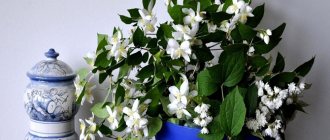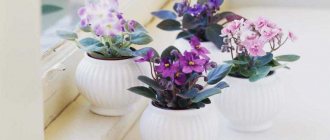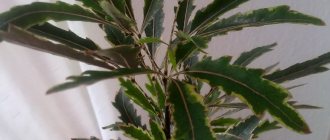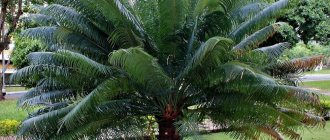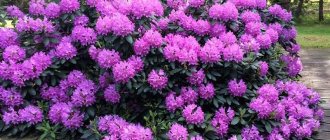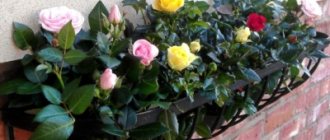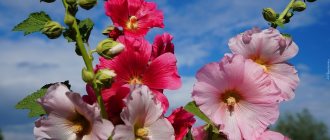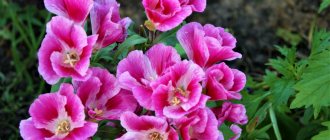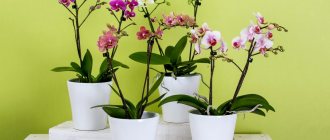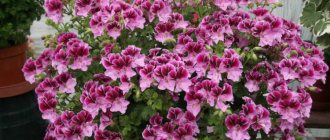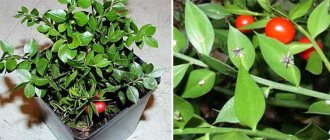A luxurious well-groomed flower bed, a flower border along the paths or a colorful lawn in a rustic style serve as a source of special pride for every mistress of a suburban home. Anticipating the multicolored splendor of summer, we enthusiastically buy armfuls of seed packets. But the result does not always justify the efforts made, since the germination of purchased seeds sometimes leaves much to be desired. Let's talk about how to choose the right flower seeds to avoid unnecessary expenses and disappointments.
Varieties of flowers
The technique is applicable both to new items that are exotic for Russian flower growers, and to long-familiar garden and indoor flowers that enliven window sills in homes, as well as flower beds near the house. In the table you can see which flowering varieties of annual and perennial plants are most often represented.
| begonia | dahlias | aquilegia | Lavatera (wild rose) |
| cyclamen | gerbera | tulips | yarrow |
| abutilone | phlox | ranunculus | nasturtium |
| camellia | purslane | lupine | Eschsolzia |
| pelargonium (geranium) | abutilone | viola | saxifrage |
| balsam | mimulus | cosmos | gypsophila |
| eustoma | periwinkle | liatris | mallow |
| brugmansia | marigold | chamomile | daisy |
| aster | asparagus | anemones | morning glory |
| acacia | bauhinia | astilbe | godetia |
| passionflower | eucalyptus | calla lilies | catnip |
| petunia | catharanthus | gladiolus | chicory |
| primrose | bloodroot | clematis | ageratum |
| mimosa | carnation | peony | cornflower |
| delphinium | irises | buddleya | gloriosis |
| sunflower | calendula | Cannes | hyssop |
| Snapdragon | lobelia | lily | day-lily |
| echinacea | matthiol | torenia | cineraria |
| chrysanthemum | hibiscus | castor bean | amaranth |
With the arrival of warmer weather, hybrids of perennial begonias bloom with all sorts of interesting colors: pink, red, white, yellow, orange. At this time, they are transplanted into open ground so that they become stronger and gain strength. For the winter, the green pets are returned to their homes. Photos of indoor flower seeds demonstrate that their small appearance sometimes causes them to be sold in granules.
Perennials
The choice of perennial flowers for a flower bed is justified in many ways: this is constancy, and the absence of the need to tinker with seedlings every spring, and a well-kept garden for several seasons. In addition, if you need luxurious flower beds with large, bright, showy flowers, then these are mostly only perennials. Annual flowers grow much smaller and more modest.
In addition, when growing perennial flowers, there is no need to spend money on buying seeds every year. And these flowers are much less troublesome to grow.
Almost always continuously flowering flower beds contain the following plants:
- peonies;
- phlox;
- roses;
- dahlias;
Moreover, due to their many varieties and varieties, these plants can be used to form any flower bed: any height, shape and shades. Many gardeners choose flowers in the same color scheme or contrasting ones - such flower beds look unusually picturesque.
For early spring flowering, hyacinths and tulips of suitable shades can be added to this “basic composition”, and perennial asters can be added for autumn flowering.
To make your flowerbed shine with fresh, delicate colors in early spring, plant the following garden perennials on it:
- periwinkle;
- snowdrop;
- tulips;
- hyacinths;
- muscari;
- crocuses;
- daffodils, etc.
In the summer, flower beds decorated with:
- dahlias;
- delphinium;
- lilies;
- anemones;
- poppies;
- roses;
- sage, etc.
The following perennials are useful for late summer and fall:
- chrysanthemums;
- sedum;
- rudbeckia;
- yarrow;
- echinacea;
- asters, etc.
Let's take a closer look at the most popular varieties of perennials for the continuous flowering of a flower bed.
Rose
It is no coincidence that this plant is called the “queen of flowers” - in beauty, sophistication and luxurious appearance, few plants can compare with a rose. In addition to its spectacular appearance, roses always smell very pleasant, and you can enjoy its aroma for a long time
Many varieties of roses are quite demanding in terms of care and climate. And in many regions of our country, this beauty can only be grown in a greenhouse or greenhouse. If you want an unpretentious variety, go for the tea rose - it is a pest- and disease-resistant species that tolerates cool climates and not too much care.
Snapdragon
Many gardeners plant this bright perennial on their plots. The plant is distinguished by its outstanding decorativeness and unpretentiousness. The shape of the flowers is unusual and interesting, and the colors of the petals are striking in their diversity and brightness. However, plants with petals of blue and light blue shades have not yet been bred.
Snapdragons can be either short or quite tall. The plant feels good in partial shade, but will delight you with greater brightness in a sunny flowerbed.
Phlox
The plant is a perennial, beautifully blooming and quite unpretentious. Phlox can grow in almost any soil and are undemanding in terms of lighting and growing location. They overwinter without problems and tolerate even severe frosts well. They are very decorative in appearance, which, along with their unpretentiousness, makes them a real floral treasure.
Bell
A beautiful and delicate flower, associated by many with a field plant. However, now breeders have created so many different varieties of bells that among them you can find luxurious, even terry specimens.
The bell blooms for a long time, pleasing the eye all summer, but its flowering begins only in the second year after planting. It is better to choose shaded areas for it; the bell does not have any special requirements for the soil.
Lily
An exquisite, charming perennial with a pleasant aroma. The shades of lily petals can be any; the plant is good both in a flowerbed and as a cut flower, in a bouquet. Despite its delicate beauty, the lily is not capricious in care, and is also resistant to most garden pests. This plant begins to bloom in June and continues until autumn.
Delphinium
A very beautiful perennial, loved by many gardeners. The buds of the plant resemble tall candles and stand out with their beauty and tall growth against the background of the entire flower garden. Typically, delphinium is grown either in the center of a flower bed or at the back of a flower bed, as an elegant background. The combination of this plant with phlox and lilies looks very impressive.
Hyacinth
One of the primroses is a plant with magnificent, very bright curly caps of inflorescences. Since hyacinth is short in stature, it is usually planted along the edge of a flower bed, as a kind of border.
Clematis
This is a climbing plant that can decorate not only flower beds, but also an arch, a gazebo, and any support. The plant blooms exquisitely until late autumn. The color of clematis petals is amazingly varied - any gardener will choose the most suitable shade for himself.
Dicotyledonous plants
Popular unpretentious plants are Uzambara violets, which bloom virtually all year round, gloxinia with large bells, streptocarpus, Achimenes, and columnea. They have excellent survival rates in city apartments and an attractive appearance.
Through seed propagation, new subspecies are discovered that have double flowers of various colors, such as blue, light blue, violet, pink, red and burgundy.
Low growing varieties
Popular low-growing varieties of black tomatoes include: Indigo Rose, Chocolate Bunny, Ashdod, Shaggy Kate, Morado, Amethyst Jewel.
Indigo Rose
See description above.
Chocolate bunny
The bush reaches a height of 0.8 meters. The yield from one bush is 5-6 kg of tomatoes. The fruits are brownish-brown in color, slightly elongated. They tolerate transportation and long-term storage well.
Ashdod
See description above.
Furry Kate
The bush reaches a height of 0.7-1 meters, fruit weight is 80 g. Tomatoes at maturity are colored black, the flesh is yellow or red. Productivity from one bush is 3 kg.
Morado
Fruitful variety, mid-season. The height of the bush reaches 1 meter. The fruits weigh 200-300 g, sweet, fleshy, juicy. At maturity it is dark chocolate in color.
Lemon
It is quite possible to become the owner of a lemon tree and drink tea with your own lemons. You just have to wait for the harvest.
The planting material is the seeds of ripened fruits. They are treated with growth-stimulating drugs and planted in greenhouses with a 3 cm deepening. When shoots appear, they are watered, fed and sprayed daily.
For normal life, cuttings need to be provided with good lighting and warmth. Oranges, tangerines, and grapefruits are grown this way.
General questions about flower bed design
In landscape design, there are certain rules for designing flower beds; Their use will allow you to avoid common mistakes. They are quite simple and logical:
At the very beginning, you need to figure out what size and shape the flowerbed is needed. At the same stage, the color scheme of the future flower garden is selected. It is necessary to take into account many features: from the level of illumination to surrounding objects. A too colorful carpet of flowers, despite all its beauty, against the background of shaded greenery will look, to put it mildly, strange.
A common mistake when planning a flower bed is filling it too thickly. This should not be done, because after 1-2 years, the plantings will grow and fill all the free space naturally.
You need to understand that in a flowerbed, groups of several plants (even of the same species) attract much more attention than single flowers planted separately.
Round flower bed with central symmetry and proper distribution of plants
Each plant has its own flowering period. Unfortunately, there are not so many plants that can please the owner’s eye with flowers throughout the entire warm season. Therefore, the flowers in the flower beds should be selected in such a way that the end of the flowering period of some coincides with the beginning of the flowering of others.
Thanks to this simple technique, the flowerbed will delight flower growers and summer residents, from early spring to late autumn. If it is not possible to select all the perennials in the flowerbed to ensure continuity of flowering, annuals can fill the gaps between the flowering of perennials.
Naturally, the choice of both the type of flowers and their location depends on the lighting conditions, humidity and soil composition at the intended location of the flowerbed. Flowers with the same growing rules and maintenance conditions are selected within the same flower bed.
Ornamental plants
There is no less demand for decorative foliage flora, whose list has been replenished:
- Chlorophytum.
- Dracaena.
- Japanese fatsia.
- Jacaranda.
- Coleus.
- Ficus Benjamin.
- Cyperus.
- Jacaranda.
- Albizia.
- Crossandra.
- Guava.
- Hosty.
- Delonixa.
- Chamerops.
These specimens love to bask in the sun and receive fertilizer. In the winter season, when the central heating is turned on, they are disturbed by dry air, which causes them to shed leaves. It is better for them to overwinter in a cool place with constant spraying.
This is not a complete list of options for which indoor flowers can be grown from seeds. Tropical fruit varieties such as passion fruit, figs, kiwi, and feijoa are in demand.
Varieties of black tomatoes for the Urals and Siberia
Popular varieties of black tomatoes for the Urals and Siberia include: Morado, Ashdod, Black Prince, Chocolate Bunny, Vranac, Japanese black truffle, Watermelon, Chocolate.
Morado
See description above.
Ashdod
See description above.
Black Prince
See description above.
Chocolate bunny
See description above.
Vranac
See description above.
Japanese black truffle
See description above
Watermelon
The bush reaches a height of more than 2 meters. After pinching and forming the crop into one stem, it is tied to a support. The weight of one fruit is 120-140 g. Productivity per 1 sq. m – 3.5-5 kg. The tomatoes are dense, fleshy, round in shape.
Chocolate
Productivity per 1 sq. m – 6-7 kg. The fruits are elongated, brown with green spots. The variety is resistant to low temperatures and diseases.
Palm trees
A spectacular tree can be grown from a date kernel. With regular watering, it will take two weeks for a sprout to appear. Initially, it does not need to be fertilized, but if there is a noticeable upward thrust, micronutrients will be required. Quick adaptation will soon allow you to admire a luxurious, beautiful tree.
For those who are away from home for a long time due to business trips, Nolina is suitable. Its bottle trunk stores moisture, so bocarnia can withstand several weeks without watering.
At home, you can even grow a banana from seeds, but the fruits of such varieties are not very tasty and are grown more for decorative reasons.
Pepper
The miniature plant sprouts magnificently not only in the garden, but also on the windowsill and begins to bear fruit in the same year. Variegated peppers are elegant, looking like a Christmas tree. They are used for their intended purpose as food, and upon final ripening they represent raw materials for the future harvest.
The height of indoor peppers varies from 25 to 65 cm, height depends on the plant variety
Selecting and buying indoor flower seeds will not be difficult, thanks to the wide assortment in online store catalogs. In addition, they can be ordered for delivery by mail.
Let's start with planning
When entering the flower seed department, even people indifferent to plants fall under the spell of bright labels with luxurious zinnias, bright petunias or delicate violets. What can we say about gardening enthusiasts who often buy armfuls of colorful packages, unable to resist such temptation. Meanwhile, seed prices can hardly be called low, especially when it comes to imported hybrid varieties.
To avoid unnecessary expenses, do not buy seed materials spontaneously.
- Plan your future flower bed in advance, decide on the types of flowers you are going to plant.
- Conduct an audit of old stocks - perhaps you have some varieties left over from last year.
- Make a list of seeds that you need to purchase.
- Study the offers of specialized online sites to find out the approximate price level for the varieties you need.
- Visit several specialty stores to find out their selection and pricing policy.
You shouldn’t put off buying seeds until spring, when all summer residents are caught up in the seasonal rush. In autumn and winter, specialized stores are almost empty, you can calmly, without haste or crowd, choose the best varieties, consult with sellers, consult about the manufacturer and methods of caring for the variety of flowers you like.
Landing details
For a successful result, planting is carried out in the spring, after treating the seed with a stimulant, for example, Epin. They resort to the stratification method by placing the material in the refrigerator for two days on a damp cloth in a bag. The container is equipped with drainage holes and drainage made of pebbles and broken bricks.
You can use:
- plastic mini-greenhouses;
- peat cups;
- small ceramic pots.
The dimensions of the container increase according to the dimensions of the growing young animals. Light soil should absorb water easily.
They take a purchased substrate or combine fertilizers with peat and sand. The ingredients of the composition are pre-calcined in the oven to prevent infections. The dishes are filled, leaving 1-2 cm on top, slightly compacting the soil. For uniform distribution, small varieties are mixed with sand, slightly pressing them into the top layer.
After planting, water with settled and warm liquid, preferably with a spray bottle. The devices are covered with polyethylene and placed in a sunny place. The condensate that appears is removed by opening the greenhouse slightly. Ventilation is carried out three times a day to prevent mold or mildew from occurring.
Systematic moistening is carried out. When young sprouts peck, the film is removed; now they need the sun, but not direct scorching rays.
On short daylight hours, additional lighting is installed. Three true leaves indicate that the time has come to place them in separate pots by picking. Mineral and organic fertilizers will help improve the development of children under their care. Flowering can be expected in the second year of life.
Indoor flowers from seeds at home have enviable vitality, they are not affected by insect pests and infectious diseases, which greatly facilitates care, and the room is transformed before our eyes, gaining comfort and beauty.
For a small price, you can grow useful medicinal plants, all kinds of vegetable, spicy, berry crops, rare exotic fruits, decorative flowers and even mushroom mycelium from seeds on your balcony or in the garden.
Types of nigella
Of the 26 species, only 10 are found in Russia. The most famous types:
- Nigella or field nigella (N. arvensis) is the most common.
- Damask nigella (N. damascena L.) - found in Western Asia, Crimea, the Caucasus, and Southern Europe.
- Nigella sativa (N. Sativa) - grows in the Caucasus, Mediterranean, Crimea, Asia.
- Nigella glandulifera (N. glandulifera) – found in Turkmenistan.
- Spanish nigella (N. hispanica) - found in Spain.
- Nigella (N. Integrifolia) - found in Iran.
- Eastern nigella (N. orientalis) - grows in the Caucasus.
- Nigella (N. Oxypetala) - grows in the Caucasus, Crimea.
- Nigella (N.segetalis) - found in Crimea, Turkey, and the Caucasus.
In addition to it, field, Damask, oriental and Spanish nigella can be grown in gardens.
Field
In nature, you can encounter field nigella (Nigella arvensis). It is expressive and original enough to be easily identified. It does not reach large sizes; its leaves, reminiscent of dill and an original flower, will not allow you to pass by indifferently. In agricultural fields it is considered a weed.
This species has no decorative value when designing a garden. The advantage of field nigella is the healing properties of the seeds and their positive effect on the digestive system.
Damascus
Damascus nigella (Nigella damascena), which is commercially available in the form of seeds for sowing, is primarily valued for the decorative nature of its flowers and leaves. In Crimea it runs wild and lives in the flora. The plant loves dry fields and steppes. Blooms all summer. Flowering depends on the sowing time - if the sowing time is late, nigella will bloom longer. The plant reaches 40-50 cm in height; low varieties are commercially available.
Photo. Damascus nigella (nigella)
Nigella damascena is characterized by pinnate leaves. The flowers are single, simple or double, in blue, white, pink, and purple shades. After flowering, the fruits also have decorative value. Flowers can be used for fresh and dried bouquets. The seeds are black. One gram contains about 400-500 seeds. Nigella is honey-bearing and insectivorous.
Damascus nigella seeds have pharmacological properties similar to those of black cumin seeds: they support intestinal motility and the proper functioning of the digestive system. Due to its diuretic properties, it can be useful for problems with the urinary system.
Interesting varieties of Damask nigella with blue and blue flowers:
- “Blue Midget” Blue Midget – height 25 cm.
- "Miss Jekyll" Miss Jekyll - grows up to 50 cm, double flowers.
- "Deep Blue" Deep Blue.
- "Little Girl" Little Girl.
- "Oxford Blue" Oxford Blue.
- "Undine" Undine.
Other interesting varieties:
- “Persian Jewels” Persian Jewels is a variety with variable flower colors (white, pink, blue).
- "Rose Jewels" Rose Jewels is a variety characterized by pink flowers.
Sowing (black cumin)
Another popular species is Nigella Sativa, which is valued for its seeds used as a seasoning for vegetables and meat. It is also called Black Cumin or Roman Coriander. Dioscurides and Pliny the Elder wrote about nigella seeds that they are used to sprinkle bread and alleviate many ailments. In ancient Rome, seeds were readily used for culinary purposes. When consumed, garlic was said to soften the unpleasant odor.
The stem is straight, branched, reaches a height of 40-50 cm, the root is taproot, up to 25 cm long. The leaves are pinnate, the flowers are white or pale blue. The plant blooms from June to August depending on the sowing time. The fruit contains seeds that remain viable for several years.
Considered a weed, it grows in the steppes and fields. Also grown for spices. The seeds are bitter, contain a lot of essential oil, and are used in cooking. Black cumin oil has a raspberry aroma and is used in perfumery.
Eastern
Another species that can be found in the garden is the eastern nigella (Nigella oreintalis). It does not have such original flowers as Damask, but if you like flower beds in a naturalistic style, it is worth taking a closer look at it. Its requirements and cultivation are similar to Nigella Damascus.
The leaves are pinnate, the height of the plant, depending on the conditions, is 30-50 cm. The yellowish flowers are inexpressive; the decorative effect of the species is due to the original fruits, which represent the main aesthetics of the plant. Blooms all summer. The inflorescences form a kind of crown, they are original and can be used for dry bouquets. Gives self-seeding.
“Transformer” Transformer is an interesting variety of eastern nigella.
Spanish
A very decorative plant with delicate forms that also deserves attention is Spanish nigella (lat. Nigella hispanica). Its height can exceed half a meter, the leaves are feathery, and large flowers (larger than Damask) appear in the summer.
The flowers are original, colored in shades of purple and blue, very decorative. If you look closely at the inflorescence, you will notice that there are still small petals above the main petals, in addition, there are decorative anthers and stamens, collected in several and located more horizontally. In general, the flower looks very original and decorative.
The plant is not one of the demanding ones. It is worth providing it with a sunny position, a fertile substrate, sufficiently moist and permeable.
Photo of indoor flower seeds
Perennial country flowers for the garden and vegetable garden. Catalog with description
Dacha - this word evokes a range of memories, emotions and impressions in everyone. In order for all these thoughts to be more positive, and trips to the dacha more joyful, it is worth paying more attention to flower beds and flower beds. They will delight the whole season with a riot of colors and wonderful aroma. Perennial plants will help make any color fantasies come true. The advantage of perennial flowers is that, having planted them correctly once, you can enjoy the result for several years. The most popular ornamental perennial flowering plants are described in this manual. And also, for convenience, all flowers are divided into groups according to their flowering period. Having studied the basic principles of cultivation, you can safely begin to form flower beds and flower beds on your site.
According to the flowering period, ornamental plants are divided into spring, summer, and autumn.
